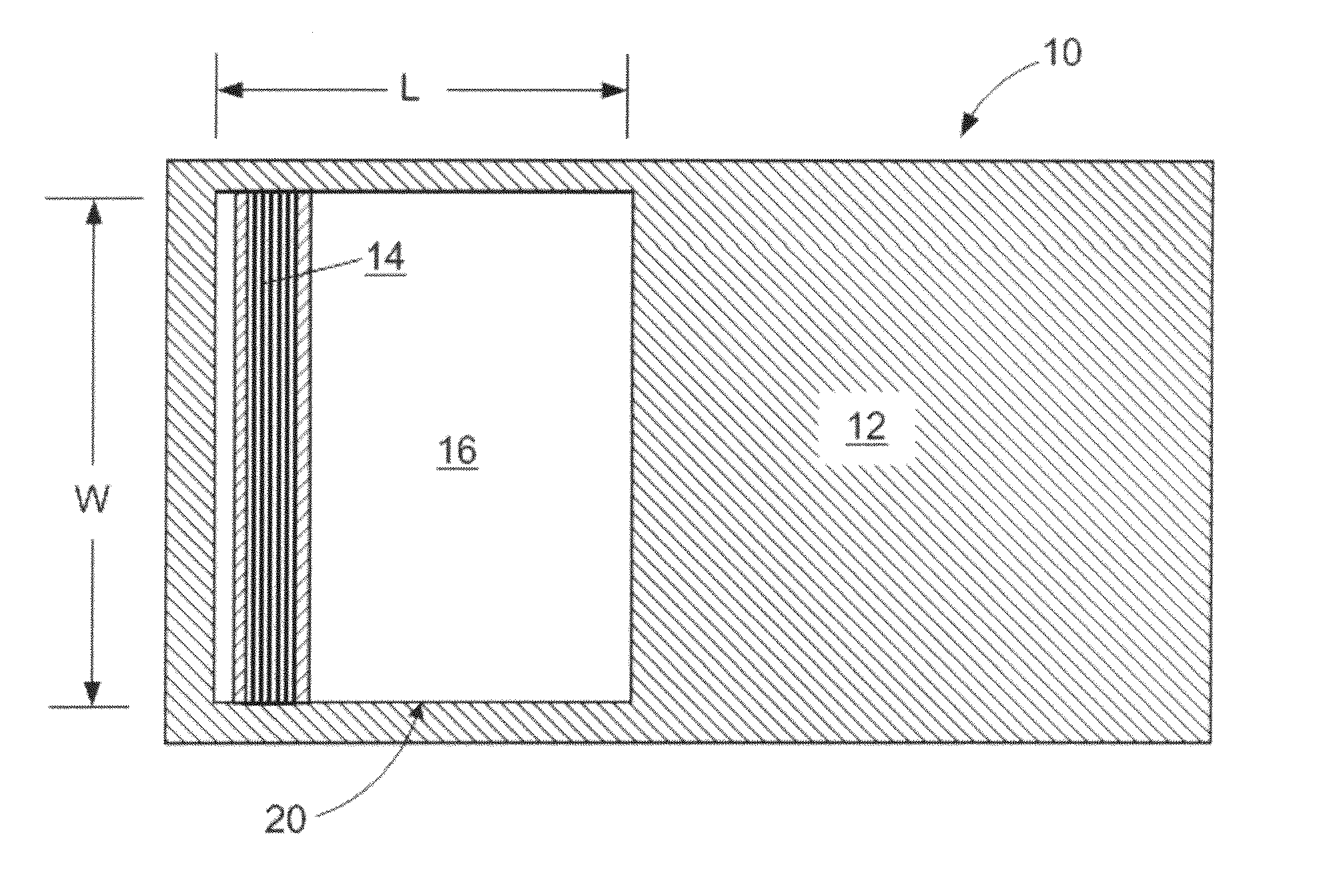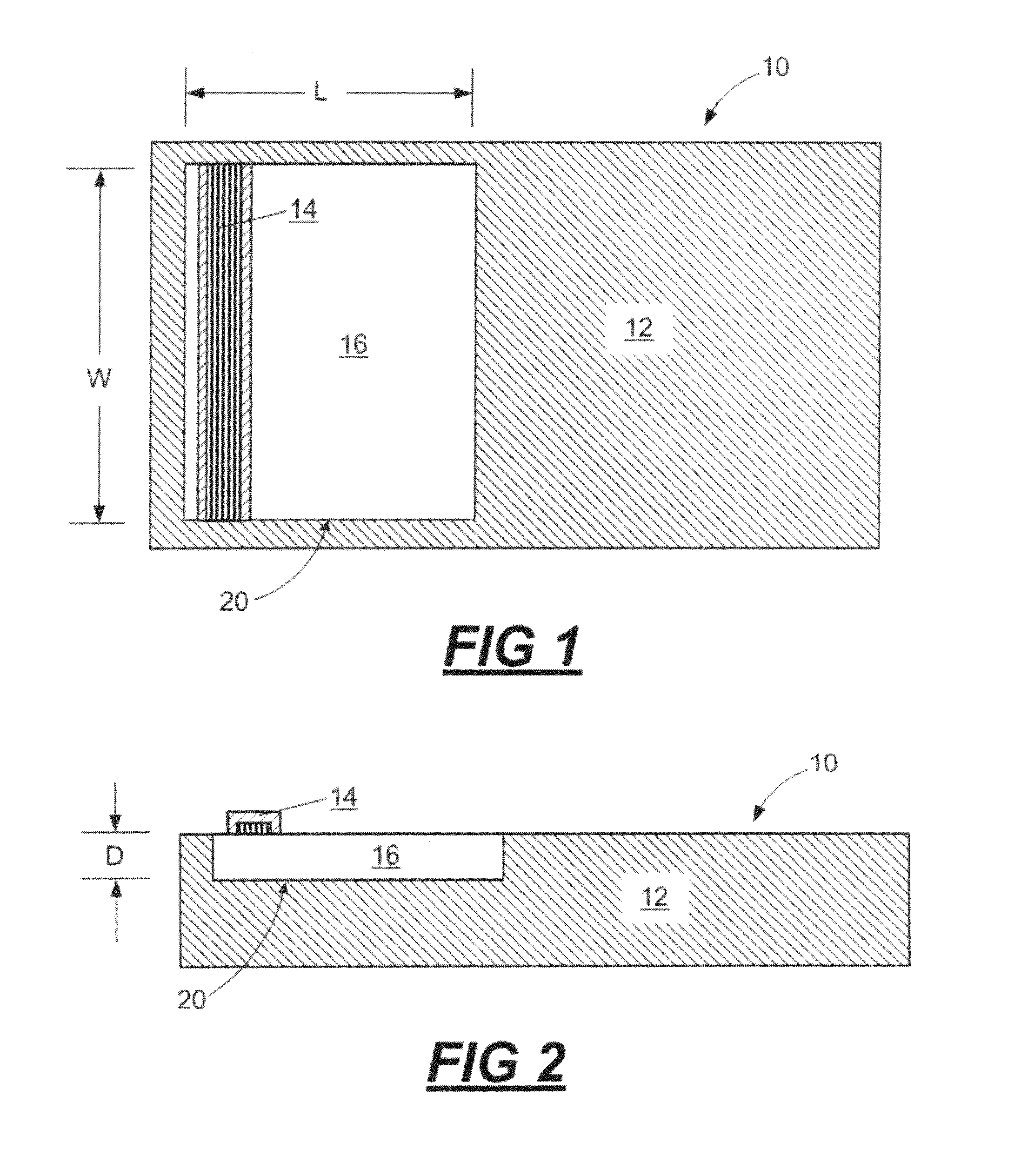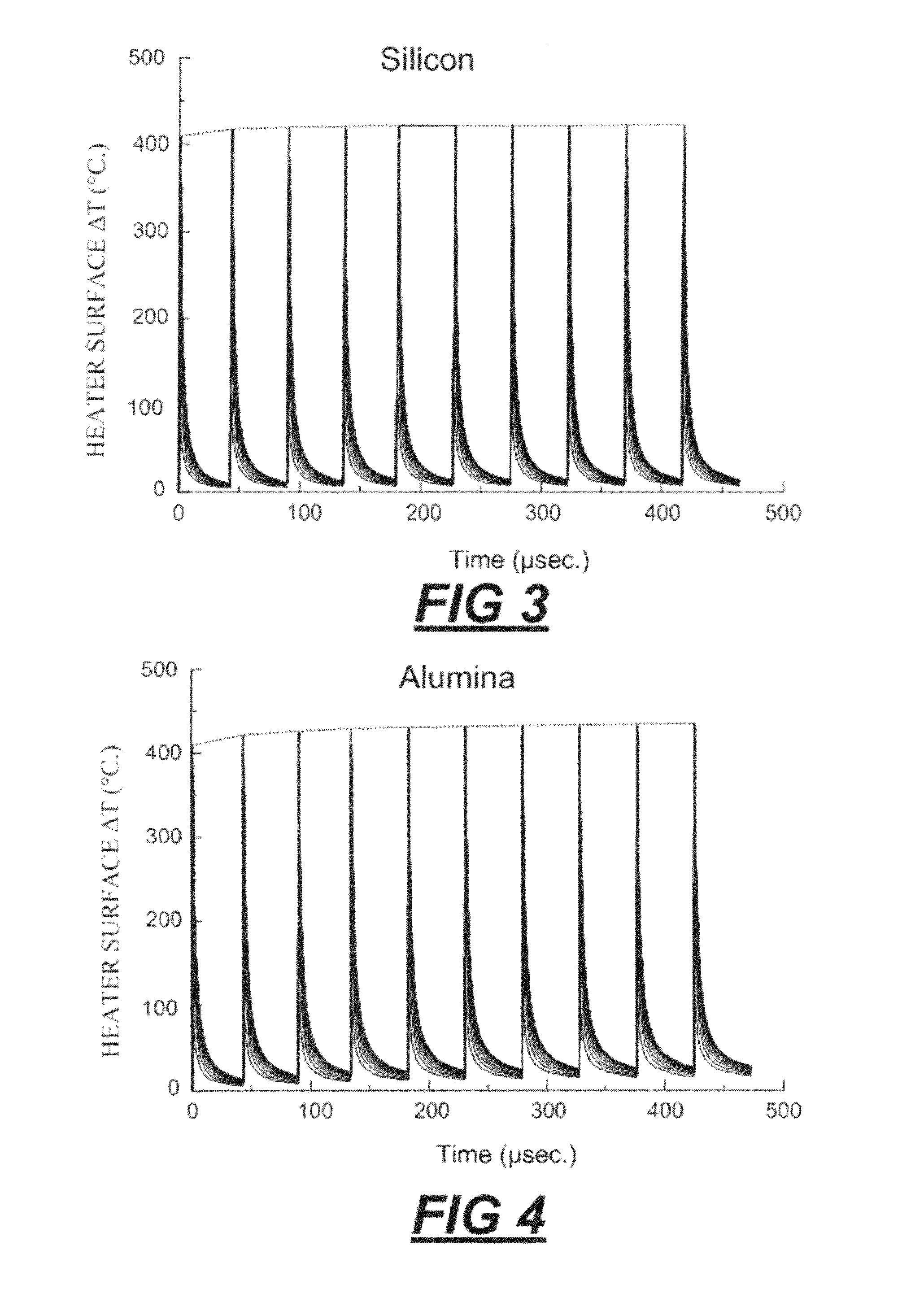Method for Improving Thermal Conductivity in Micro-Fluid Ejection Heads
- Summary
- Abstract
- Description
- Claims
- Application Information
AI Technical Summary
Benefits of technology
Problems solved by technology
Method used
Image
Examples
Embodiment Construction
[0020]According to exemplary embodiments disclosed herein, there is provided methods for modifying low thermal conductivity substrates to yield substrates having improved thermal conductivity properties. With reference to FIG. 1, there is shown a plan view of a portion of a micro-fluid ejection head 10, such as an inkjet printhead, having a substrate 12 modified according to such an exemplary embodiment.
[0021]In a manner well known in the art, thermal fluid ejection actuators, such as heater resistors, are formed adjacent to a device surface of the modified substrate 12 in an actuator region 14 of the substrate 12. Upon activation of a thermal fluid ejection actuator in the actuator region 14, fluid supplied through a fluid path(s) in an associated fluid reservoir and corresponding fluid flow slot(s) in the substrate 12 is caused to be ejected toward a media through a nozzle in a nozzle plate associated with the substrate 12.
[0022]Substrate 12 represents a base substrate material wh...
PUM
 Login to View More
Login to View More Abstract
Description
Claims
Application Information
 Login to View More
Login to View More - R&D
- Intellectual Property
- Life Sciences
- Materials
- Tech Scout
- Unparalleled Data Quality
- Higher Quality Content
- 60% Fewer Hallucinations
Browse by: Latest US Patents, China's latest patents, Technical Efficacy Thesaurus, Application Domain, Technology Topic, Popular Technical Reports.
© 2025 PatSnap. All rights reserved.Legal|Privacy policy|Modern Slavery Act Transparency Statement|Sitemap|About US| Contact US: help@patsnap.com



